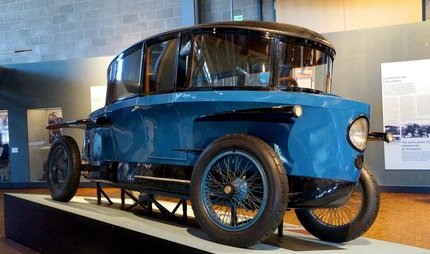
Zucker-Museum (Sugar Museum)
A world of sugar
Please note: The current opening and closing hours and special hygiene rules for the Covid-19 are available on this website.
From 2015, the Deutsches Technikmuseum has a new permanent exhibition: "All Sugar! Nutrition - Raw Material - Energy". This involves sugar in nature, technology, agricultural and cultural history. You'll discover what balloons, plastic bags and one powerful crab all have sugar in common. The entire process, from growing to manufacturing sugar is revealed. Lithographs and paintings tell of the eras of large sugar cane plantations overseas.
Sugar - its life in building and sculpture
The Zucker-Museum has been in existence since 1904. For a long time it's reserved for trade visitors, and at times, it is part of the Technische Universität Berlin. In 1988, it becomes a regional museum. In 2012 the collection moves (from the Institute of Food Technology) to the Deutsches Technikmuseum. The redesigned exhibition finally opens in 2015. Entrants to the museum may be surprised that the expected sugary sweets are nowhere to be seen. Instead, you find a Japanese spider crab, cellulose, a balloon, paper cups, plastic bags and many other familiar everyday objects. The exhibition concept arouses curiosity. Gradually visitors learn how our world is to a large extent made from sugar. Plants store the sun's energy in it, the exoskeletons of crabs are made of the substance and the polymer is also the basis for many modern materials, such as plastic. Find out why without sugar, there would be no alcohol. Learn why with a historical distillation apparatus.
The entire exhibition is integrated into the Deutsches Technikmuseum; A modern establishment that focuses on interaction and discovery. Huge glass display cases show historic sugar cans and sugar bowls. Witness sophisticated everyday culture in the noble salons, or see how an old-fashioned sugar cane mill works. Between the 16th and 18th centuries, cities like Antwerp, Hamburg and London arise as major European trade hubs and refining centres. A model ship shows how the sweet, brown mass is transported in barrels across the Atlantic. Pictures and lithographs show the arrival of the first cargo of sugar in Antwerp. In 1749, Berlin chemist Andreas Sigismund Marggraf discovers beet sugar. Franz Carl Achard, the Director of the Royal Prussian Academy, breeds sugar beet and produces sugar in Berlin up until 1783. A model shows Achard's beet sugar factory.
Highlights in the Zucker-Museum
- Japanese spider crab with chitin shell consisting of a sugar compound.
- Bolivian three-roller sugar cane mill made of wood (about 1700).
- Lithography "Les colonies de la France" (19th century).
- Earthenware sugar loaf shape with syrup pot, early 19th century.
- Swedish sugar box made of elm wood, late 18th century.
Raisin bombers, steam cars and a cultural centre in the old meat locker
Remain in the Deutsches Technikmuseum: since 1983 it has been one of Europe's largest technical museums of historic aircrafts, ships and locomotives. Above the entrance is the famous raisin bomber Douglas C-47 type B Skytrain. Railway enthusiasts get to see vintage rolling stock footage including the saloon car of Kaiser Wilhelm II. Just 200 metres away is a seven-story brick building, Berlin's (Industry) Cultural Centre Das Kühlhaus. In 1901 companies store their food here, but the space is currently being reconstructed. The former cold storage is a venue for exhibitions, concerts, theatre and dance events.
Opening hours
| Tuesday | |
|---|---|
| Wednesday | |
| Thursday | |
| Friday | |
| Saturday | |
| Sunday |



